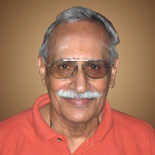|
Go to Part 25 V - Ätmä is self-effulgent or svayaàjyotiù In Båhadäraëyaka Upaniñad (4.3.2 to 4.3.7), Yäjïavalkya reveals to King Janaka, that it is consciousness or ätmä that serves as the light for us. The expression “light” includes all those, in the presence of which things are known and in the absence of which things are not known. After mentioning the obvious external sources like the light of the sun, the moon, the fire, the speech (which includes the odor, taste and touch), he discloses the ultimate source as ätmä, which is the self-effulgent illumination, svayaàjyotiù.
Usually we consider that the sun, the moon, the fire etc., which are sources extraneous to the body, provide illumination and enable us to vividly live and transact in the waking world. However, even when the objects are lighted and the sense organs are in their functional state, we are able to perceive only when the mind turns its attention to them. Nevertheless, even though the mind is not functioning in the state of deep sleep, we awake from the sleep with the knowledge that we slept well. From these it is clear that consciousness or ätmä, which is different from the mind, the sense organs and the external sources, illumines them like the sun. Ätmä is intrinsically luminous and it is itself not illumined by anything else. It is the ever-shining light and by its light, everything shines variously. Explaining the process, Çaìkaräcärya says that buddhi, which is pure and is the subtlest, gains sentience from ätmä and manas obtains it from the buddhi and the sense organs from the manas. Thus, all of them function through borrowed consciousness.
Kena Upanisad (1.2 to 1.9) presents it graphically and says that consciousness is the mind of the mind, the life force of the life force, the eye of the eye, the ear of the ear and the speech of the speech. [175]. This description makes it clear that
VI - The means to recognise ätmä Having said this, Kena Upanisad also clarifies that consciousness is not something to be looked for in the various things as an object. The eyes cannot reach it, or the speech, or even the mind [177] as it is not an object either known or unknown. [178] So, the seeker who thinks that he knows it as an object does not really know it while the seeker who does not know it as an object knows it. [179] In Båhadäraëyaka Upaniñad (3.4.2), Sage Yäjïavalkya explains the reason for the same to Uñasta and also reveals the self:
The question now arises as to how we can know it when we cannot perceive it as an object. Kena Upaniñad explains that it is because of consciousness that everything is known and so, it can be recognized as that which makes the cognition of everything possible. It says that it is that which cannot be uttered by speech but because of which speech can be uttered; it is that which one cannot comprehend with the mind, but by which the mind is thought; it is that which one cannot see with the eyes, but by which the eyes see; it is that which one cannot hear with the ears, but by which the hearing is heard; it is that which is not enlivened by the vital force, but by which the vital force is enlivened. It is that which is always known in every thought, in every piece of knowledge [180]. Explaining this further, Saìkaräcärya says:
In everything that we see, we can recognise the light as that which makes seeing possible by the eyes. Similarly, in every experience, we can recognise consciousness as that which makes experiencing possible. Even as we do not require a particular lighted object to know the light, we do not require any particular experience to recognise consciousness or ätmä.
VII – Mantra from Mäëòükya Upaniñad about ätmä The revelation about ätmä is comprehensively given in Mäëòükya Upaniñad (7) and is reproduced below.
175. Çrotrasya çrotraà manaso mano yad väco ha väcaà sa u präëasya präëaù| Cakñuçcakñuratimucya dhiräù pretyäsmällokädamåtä bhavanti|| It is the ear of the ear, mind of the mind, speech of speech, the life of the life force and the eye of the eye; therefore, wise persons, having become free from ignorance, become immortal when they leave this world. (Kena Upaniñad, 1.2.) Go to Part 27
|
|||
|
|||


www.advaita.org.uk
Advaita for the 21st Century



Vedanta - Part 26
VEDĀNTA the solution to our fundamental problem
D. Venugopal

D. Venugopal is a student of Swami Paramarthananda and a direct disciple of Pujya Swami Dayananda. He has successfully completed the long-term residential course in Vedanta and Sanskrit conducted from May 2002 to July 2005 at the Arsha Vidya Gurukulam, Anaikatti.
Go to CONTENTS
Biography
Buy from Amazon UK
. Available from Bharatiya Vidya Bhavan centers at London, New York and Sydney.
. Also through the IBH Books & Magazines Distributors Pvt. Ltd. - contact contact@ibhworld.com. In case of difficulty,pvsankarankutty@bhavan.info can be contacted.
BOOK DETAILS
Publisher: Bharatiya Vidya Bhavan
ISBN: 978-81-7276-457-9
Format : Paperback
Pages: 324
List Price: US$7.00
Where to Buy
AUTHOR DETAILS

